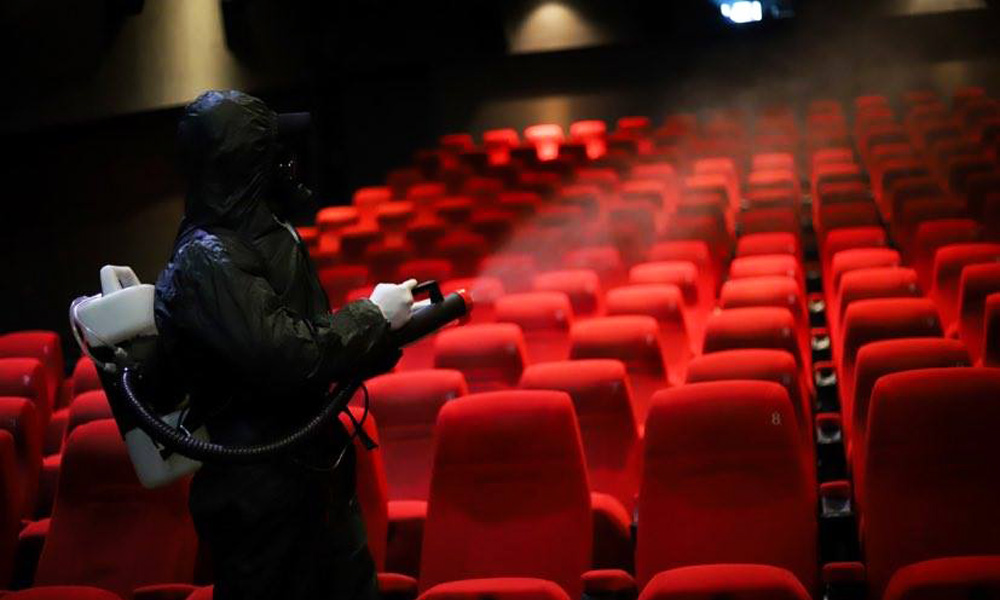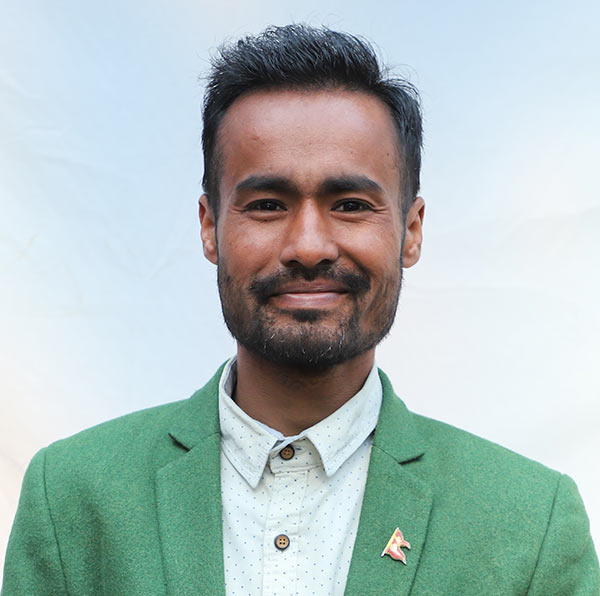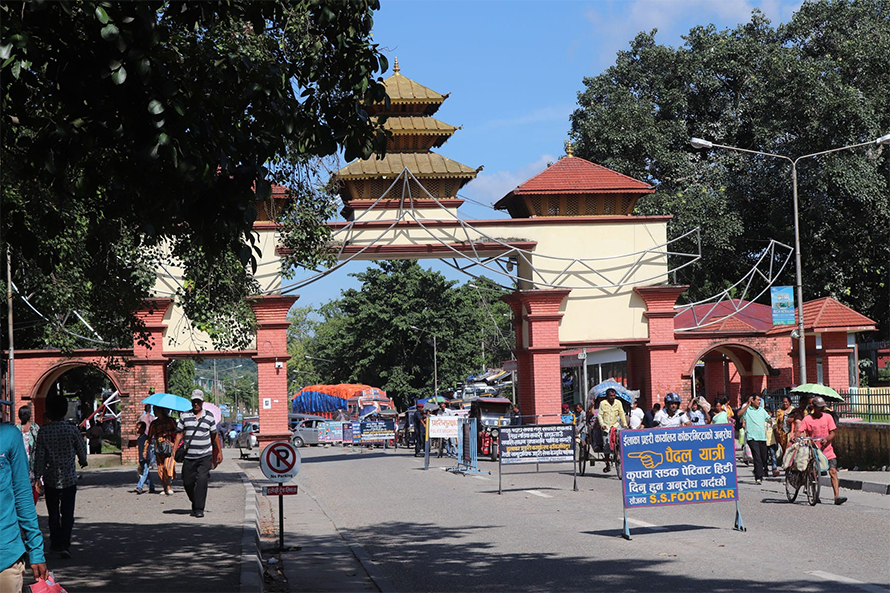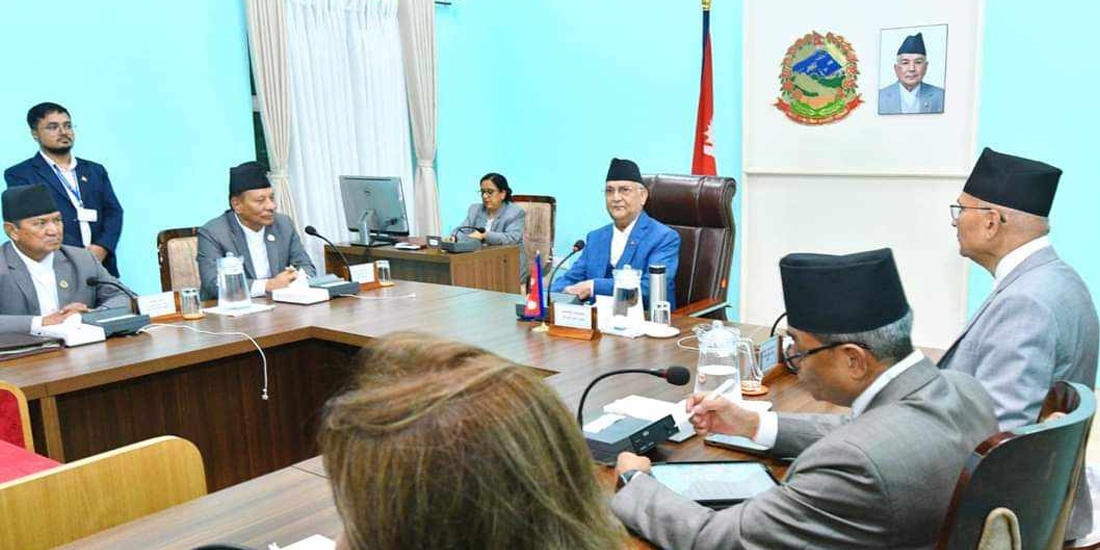Film industry hit by COVID-19 again, New Year likely to remain silent

KATHMANDU: The Nepali New Year is approaching. Under normal circumstances, there would be a lot of competition to release films on New Year’s Eve. However, last year and this year, the atmosphere is different.
The film industry, which had collapsed due to COVID, had slowly begun resuming activity. Filmmakers were scrambling to make new films. Artists were eager to return to work, but rumours of a second wave of COVID-19 have put the film industry to sleep again and new releases have become postponed.
The latest trends in Nepali cinema are as follows:
- The second part of the multi-starrer ‘Lappan Chappan’ and ‘Mansanga Mann’ postponed the pre-scheduled New Year’s release plan. The ‘Krishnalila’ scheduled to come on the same date has also been postponed.
- It is yet to be decided when the filming of the second phase of Milan Chams’ ‘Gorkha Warrior-2’ will start. Amidst the confusion of the COVID pandemic, the fourth part of ‘Kabaddi’ is preparing to begin from the third week of April. Some producers who had made up their minds to begin shooting have made up their minds not to start filming immediately.
- Even three months after the opening of the theatres, the ‘occupancy’ of Nepali film halls has not risen above 10% on average. Distributors have not been able to bring big Hollywood and Bollywood movies with high investment. There is still a risk that the invested amount will not be raised when high-investment films are brought. Due to this, Godzilla Versus Kong, which was supposed to be screened this week, could not be released.
The halls that had been closed for 10 months due to the lockdown were reopened on 25th December. After the businessmen reopened theatres unilaterally, the government gave permission to conduct film activities with certain conditions in place from the cabinet meeting on 10th January. The government’s condition was to close theatres again if the infection rate increased, to tighten public health standards and to operate the cinemas at 50% occupancy. Based on these conditions, theatres were operated for three months, but with low occupancy.

As the film and entertainment industry slowly began to return to normalcy, the risk of a possible second wave of coronavirus pandemic has begun. This risk has increased in Nepal after the second wave of the virus started spreading in neighbouring India. The Ministry of Health has issued a press release urging not to hold meetings, processions, meetings, gatherings and crowded activities. Nepal’s infection and transmission rates have also started rising above 100 per day since mid-March.
With the press release by the Ministry of Health and the tightening of public health standards, Nepali films have also been affected again. Not only have the films ‘Lappan Chappan-2’ and ‘Mansanga Mann’ been postponed due to fears of a possible second wave of the virus, but other films are also not likely to announce a new release date. Producers who had prepared to begin filming have also made up their minds to not start immediately and distributors have not shown interest in buying distribution rights for large films.
In these circumstances, the near future of Nepali film does not seem to be comfortable because the virus is on the rise, vaccination campaigns have been affected, and public health experts say the next 100 days will be very sensitive to infection. In neighbouring India, more than 60,000 people are infected daily. A new variant of the virus has been found in those infected.
In the last three months, there have been many attempts to bring the film industry into a rhythm. The Film Development Board also announced COVID relief for the revival and decided to give Rs 500,000 with priority to films to be released within the next six months. However, the government decision could not be effective as the released films did not perform well.
Shiva Shrestha’s film ‘Euta Yesto Prem Kahani’, which was released on 14th January, failed miserably from both commercial and critical angles. ‘Gorkhe’ and some other Hollywood and Bollywood films released since then also failed. The film business could not return to normal as audiences could not reach theatres safely.
Concerns have been raised about the potential risk of a second wave of the virus starting. Twenty-two films that could not be screened due to lockdown did not announce the release date even three months after the opening of theatres. Filmmakers who used to oppose Indian films are now waiting for the release of big Bollywood films. They are of the view audiences will not visit theatres if large foreign films are not released and thus, their films will sink.
Films like ‘Chiso Manche’, ‘A Mero Hajur 4’, ‘Pardeshi 2’, which were stopped by the lockdown, were shot within three months. Films including ‘2 Numberi’ have not reached the floor yet. More than 14 films that could not be shot due to the lockdown are not preparing to start shooting even by the final week of April. Instead, they are waiting for the situation to return to normal. Some are preparing to begin shooting by following the public health standards.
Talking to Nepal Press, Mani Ram Pokhrel, the Producer of ‘Kabaddi’, said that they are preparing to begin shooting amidst the uncertainties posed by COVID. They are preparing to conduct PCR tests of all artists and technicians for shooting in Mustang in the third week of April and not to let outsiders on the shooting set. Saying that actors who have come from the UK and other countries are currently in quarantine for the film, producer Pokharel said that they are trying to protect the cast and crew from the virus infection.
“When political parties are allowed to hold rallies and processions, we should also be allowed to conduct shooting while maintaining social distance,” Pokhrel said.
Director and producer Milan Chams completed the first phase of his long-awaited film ‘Gorkha Warrior-2’ in two weeks. He is waiting for the infection rates to return to normal before the second phase of filming begins. He is preparing to go to the UK for shooting only after COVID dies down.
In the past three months, the average occupancy at QFX, the country’s largest multiplex chain, has been 20%. If the 50% occupancy rate set by the government is considered cent percent, this is a gratifying percentage. However, as the risk of COVID increases again, the number of spectators going to theatres to watch movies is almost zero.
According to QFX CEO Roshan Adiga, the lack of a new release in theatres and rumours of a second wave of COVID have reduced the audience. Although QFX re-released previous superhit and blockbuster films, audiences did not show much interest.
Ruben Shrestha of Apple Entertainment, Nepal’s distributor of Hollywood, says that Hollywood companies have not provided films to Nepal for fear that COVID may increase again.
“Even the biggest Hollywood movies have not come out lately because of the COVID scare. Even if they are brought, large investments have to be made. There is also the question of generating the invested amount,” he says, “However, we are trying.” ‘Manoj Rathi of Kathmandu-based Bollywood film distribution company Banquets Movies also says that it is difficult to bring films due to COVID.
The situation is similar not only in Nepal but also in the Indian film industry. Bollywood has resumed the process of postponing films and their release. Bollywood, which is struggling to get back on track after COVID, is now being tested by a second wave of the virus.
The release of Amitabh Bachchan and Imran Hashmi starrer ‘Chehre’ was postponed on Tuesday. Last year’s ‘Bunty Aur Babli-2’ and ‘Hathi Mere Saathi’ have also been postponed.
Amidst the confusion, Netflix had bought the streaming rights of Akshay Kumar and Katrina Kaif starrer ‘Suryavanshi’. The release date of this film has also been postponed indefinitely.
According to Variety magazine, the pandemic has led to a sharp decline in Hollywood filmmaking so far. In 2019, 36,540 films were shot. However, in 2020, it dropped by 48% to 18,993 shootings. Variety says this is the lowest figure in Hollywood in 25 years. Paul Edley, President of the Los Angeles Film Industry, said there was an unprecedented decline in filmmaking.
In 2020, feature film production in Hollywood fell by 56% compared to the previous year, with only 1,641 films being shot. After the virus affected Los Angeles, Hollywood filmmakers are now turning their attention to northern Canada for filming. Hollywood studios and streaming companies have focused on producing film and television series in Canadian cities including Vancouver.
A third wave of the virus has begun in Europe and the United States, and the rate of infection is rising despite the vaccination campaign. As Nepal’s situation depends on India’s transmission rate, the entertainment sector (film, music and activities) is unlikely to return to normal immediately. Public health expert and film director Dr. Sachin Ghimire says that the movie sector is not likely to return to normal for some more time. He suggests filmmakers to not rush and work by adopting health standards. He says the role of the Film Development Board will be important to normalize the situation.
“The board should take steps to bring relief to recover from the pandemic and help reduce the current risks,” Ghimire suggested.
According to the World Health Organization, the number of coronavirus cases in Nepal has reached 276,839 and the death toll has reached 3,027 as of Monday. 1.758 million people have been vaccinated against COVID-19.















